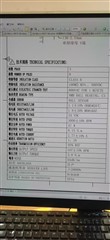Other Parts Discussed in Thread: MCF8316A, MCT8316Z, , MCF8316AEVM
Hi,
I see there are new products, MCT8316A, MCF8316A, MCT8316Z. I want to do small servo, and I want to know , can this do full closed loop conyrol? I want to add the position ring.
Thanks!


